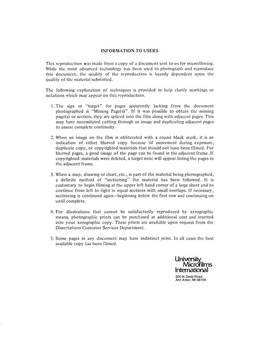| dc.contributor.author | Wright, Kay Louise Tomlinson, | en_US |
| dc.date.accessioned | 2013-08-16T12:29:16Z | |
| dc.date.available | 2013-08-16T12:29:16Z | |
| dc.date.issued | 1984 | en_US |
| dc.identifier.uri | https://hdl.handle.net/11244/5278 | |
| dc.description.abstract | Finally, treatments of the genera and species of Arundo, Phragmites, and Danthonia in the southeastern United States are presented. | en_US |
| dc.description.abstract | The genus Danthonia s. lat. has long been recognized as a heterogeneous assemblage of taxa. In an effort to elucidate the systematic relationships within this genus, an anatomical investigation of the leaf anatomy and lodicule micromorphology was carried out on 15 taxa of Danthonieae (Danthonia, 12 of its segregate genera, Schismus, and Cortaderia). On the basis of these data, Centropodia, Dregeochloa and Pseudopentameris appear to be isolated in the tribe. Danthonia s. str. is relatively uniform anatomically, and no clear-cut divisions can be made within it. Rytidosperma appears to be distinct from Donthonia s. str., but the separation of Erythranthera, Pyrranthera, and Monostachya from Rytidosperma is not strongly supported. Monachather is distinct from the rest of Danthonia s. lat., but its closest relationships apparently lie with Rytidosperma. A close relationship between Schismus and Karroochloa is supported, but suggestions of similarly close relationships of Chionochloa and/or Merxmuellera with Cortaderia are not. | en_US |
| dc.description.abstract | These anatomical and micromorphological data were then combined with other morphological data and a cladistic analysis was performed, using Wagner parsimony, character compatibility, and UPGMA cluster analysis. Major findings are that (1) Danthonia s. str. appears to represent a monophyletic group; (2) Cortaderia sect. Bifida consistently occurred within the clade comprising Danthonia s. str. and separate from the clade comprising the other sections of Cortaderia; (3) Rytidosperma and Merxmuellera appear to be polyphyletic taxa; (4) suggested close relationships between Cortaderia and Chionochloa and/or Merxmuellera were not supported; (5) evidence of cladistic relationship between Schismus and Karroochloa was not strong. Relationships among other segregate genera of Danthonia in the Southern Hemisphere were not clarified by this analysis. | en_US |
| dc.format.extent | ix, 120 leaves in various pagings (some folded) : | en_US |
| dc.subject | Biology, Botany. | en_US |
| dc.title | Studies in the Danthonieae (Poaceae) / | en_US |
| dc.type | Thesis | en_US |
| dc.thesis.degree | Ph.D. | en_US |
| dc.thesis.degreeDiscipline | Department of Microbiology and Plant Biology | en_US |
| dc.note | Source: Dissertation Abstracts International, Volume: 45-07, Section: B, page: 2022. | en_US |
| ou.identifier | (UMI)AAI8424002 | en_US |
| ou.group | College of Arts and Sciences::Department of Microbiology and Plant Biology | |
